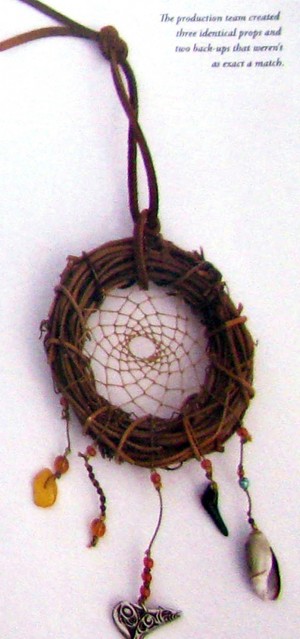By Gena Kittner
“I think that one will be the biggest dream catcher I’ve made,” said Whitehorse, who lives in Stoughton. “I’m really excited about that.”
Whitehorse’s dream catchers became popular when a small one was featured in the worldwide blockbuster “New Moon” in 2009 as part of the wildly successful “Twilight” saga of novels by Stephenie Meyer.
In the movie, Jacob (the American Indian werewolf) gives Bella (a human who loves the vampire Edward) a dream catcher to thwart her recurring nightmares caused by heartbreak over losing Edward. The gift—not part of the book—appears in a few scenes throughout the movie.
The only reason they're identified with Indians in general is because they've become commercialized trinkets for tourists and New Agers. A Quileute Indian might have one in his house, but only because it made a nice decoration. It wouldn't be part of his cultural tradition; he wouldn't assume it had magic powers or use it to catch nightmares.
In other words, the whole thing is phony baloney. It's the "mystical" equivalent of assuming every Indian has a drum, flute, peace pipe, bow and arrow, tomahawk, etc. It would be like assuming every white person has a rabbit's foot with the power to bring the owner good luck.
We don't assume that most white men have magical talismans around their necks or in their pockets. But we do assume that of most Indians. Both assumptions are ridiculous, but Hollywood treats the latter as if it's real, not a bedtime story.
For more on dreamcatchers, see Indians in Bailey at the Museum and Paul Frank's Racist "Powwow."


1 comment:
The story I heard about dreamcatchers is that a fisherman took a net, bound it more tightly, and attached little hippie things on it to sell to tourists in the 70s. Still, though...
Twilight gets Indians wrong. I abandoned the drinking game on that after being one minute in front of the toilet vomiting and the next in the emergency room.
Post a Comment